Yakitori, Japanese chicken skewers, might not be the first thing that comes to mind when you think about Japanese food, but it is delicious, affordable and can be found basically everywhere with so many different types. There are restaurants that specialise specifically in yakitori, but yakitori can also be found at almost all izakayas in every corner.
Let’s have a look at the most popular types of yakitori you can find in Japan!
Check out every Japanese food you should try, fusion dishes, types of ramen, ramen chains, yakitori, food and drinks at izakaya, fast food chains in Japan, and healthy food in Japan!
One of the best ways to explore Tokyo is to visit the local areas and immerse yourself in the local culture. If you want to explore local areas, we have created scavenger hunt adventures personalised to your interests, filled with fun facts, clues and puzzles. If you’re curious, you can check out the games here! Check out the Flip Japan Games here! |

Traditionally, yakitori is grilled on charcoal. However, due to the cost and trouble, many restaurants have switched to using electric grills.
Yakitori is a go-to Japanese dish for locals to enjoy with friends over a beer or two. It is inexpensive and typically served in relatively small portions. Often consumed during dinner, consider visiting a nearby yakitori restaurant for a few skewers and drinks with your friends.

There are also restaurants with innovative and unique recipes, where they use original sauces, special complementary ingredients and even unique ways of eating to add that little special something to the dish.
These dishes are usually great paired with Japanese alcohol and Japanese beer, so definitely give those a try as well!
It can be very confusing to figure out what type of meat or which part of the animal is on the skewer, even with English menus. So, in this blog post, we are going to break down every common type of yakitori that you can find in various restaurants. Some of these Japanese dishes might sound a little strange, but if you’re up for it, give them a try!
12 Yakitori Varieties to Try
1. Negima

Negima consists of pieces of chicken thigh or chicken breast interspersed with leek. This is a popular choice, offering complementary flavours and textures from the different ingredients.
2. Mune
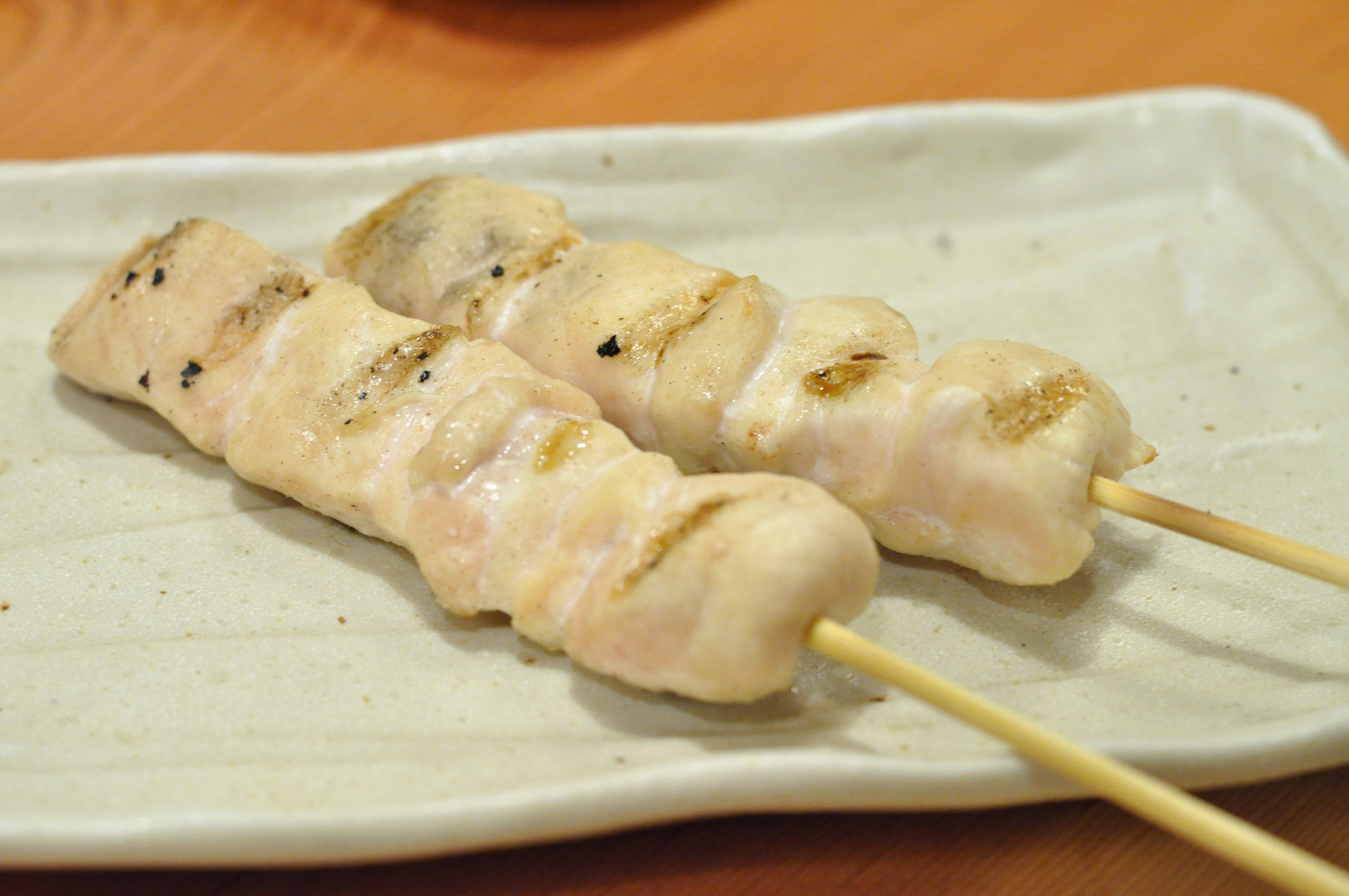
Mune (pronounced “moo-neh”) refers to chicken breast, which tends to be slightly tougher than chicken thigh.
3. Momo
Momo signifies chicken thigh and comprises skewered pieces of chicken thigh, known for its tenderness and juiciness.
4. Sasami

Sasami consists of tenderloin cuts of chicken breast, usually served with mentaiko (cod roe) sauce. It is noted for its high protein content and soft texture.
5. Tsukune

Tsukune is either chicken meatballs on skewers or a long skewer made of minced chicken. It often includes chicken cartilage, vegetables, and spices for added crunch and flavour.
6. Tebasaki
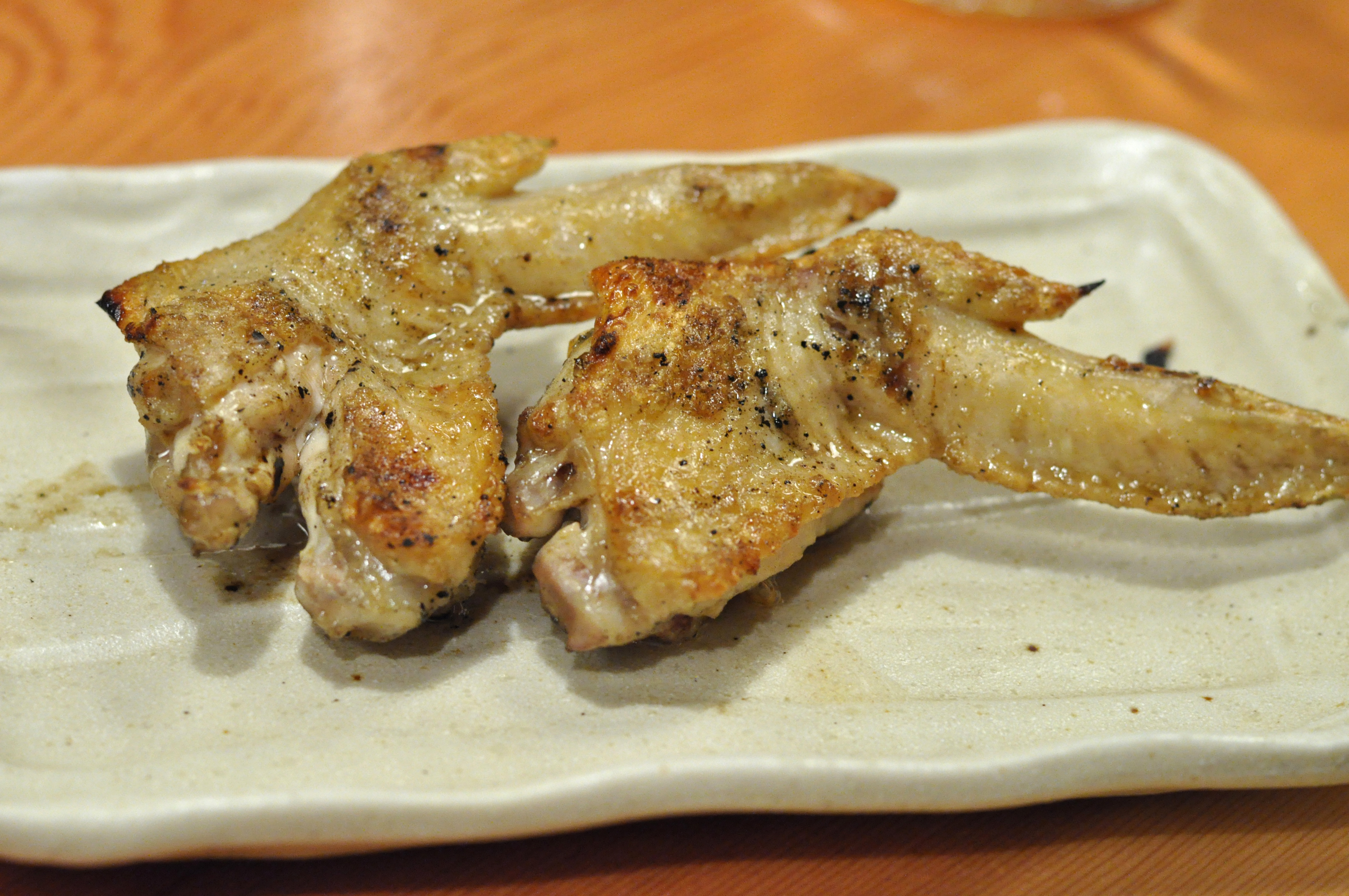
Tebasaki denotes chicken wings that are spread open and skewered together, grilled until golden with a crunchy texture.
7. Rebā (liver)
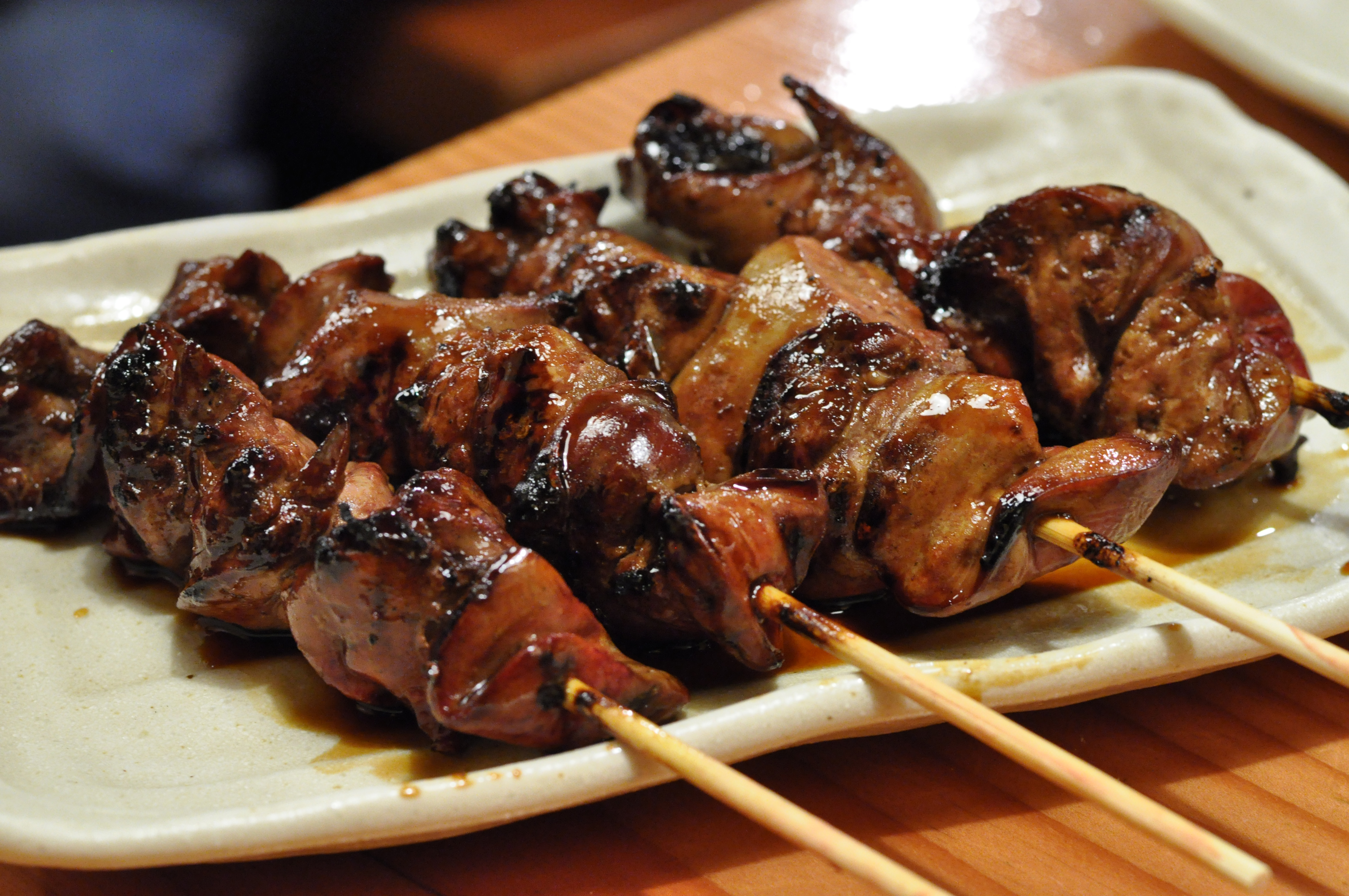
‘Rebā’ is the Japanese term for ‘liver’, and reba yakitori typically features skewered chicken liver, known for its high nutritional value.
8. Hātsu
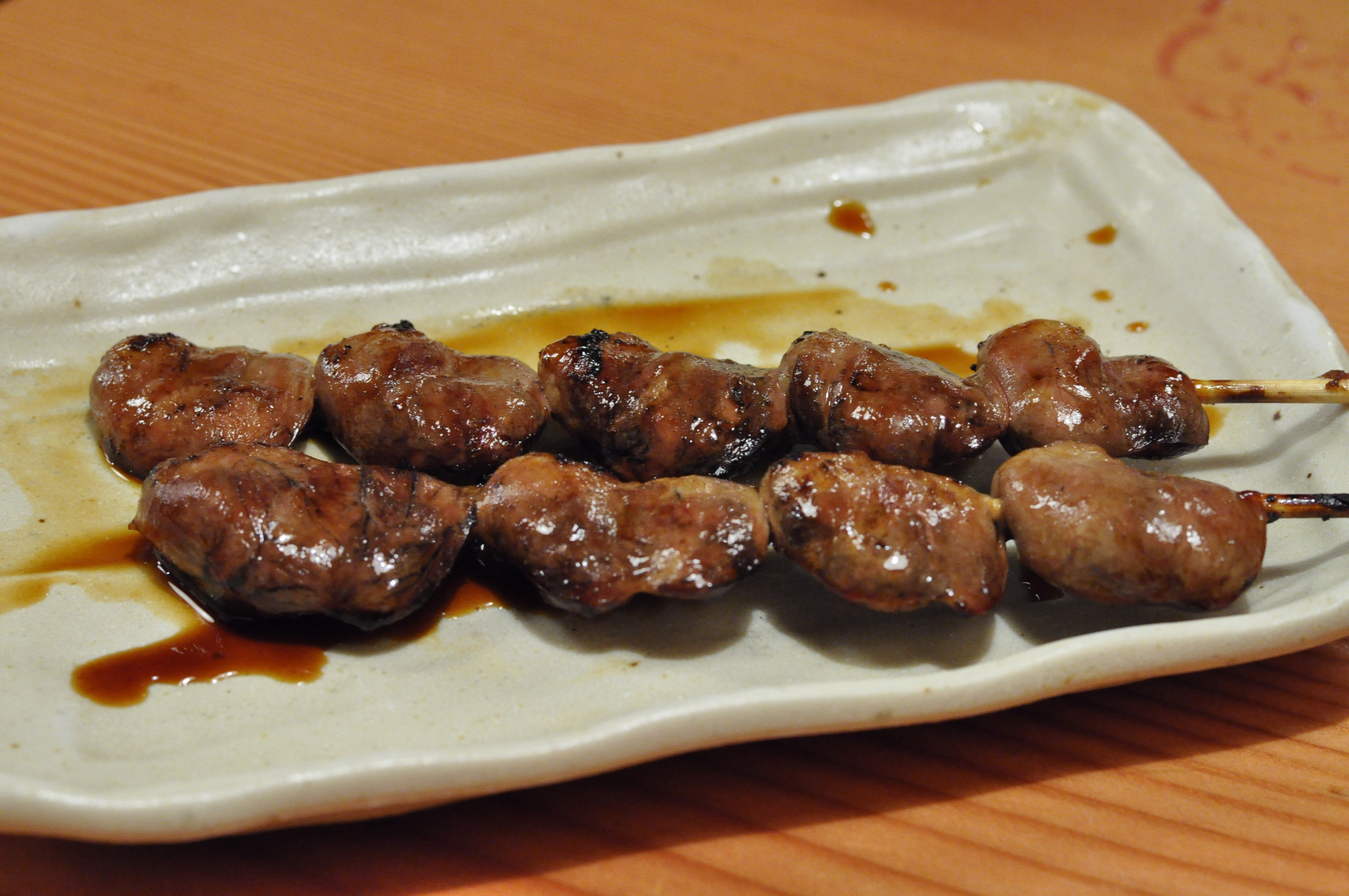
Hātsu, meaning chicken heart, boasts a strong and unique flavour, with a soft texture reminiscent of pudding.
9. Sunagimo
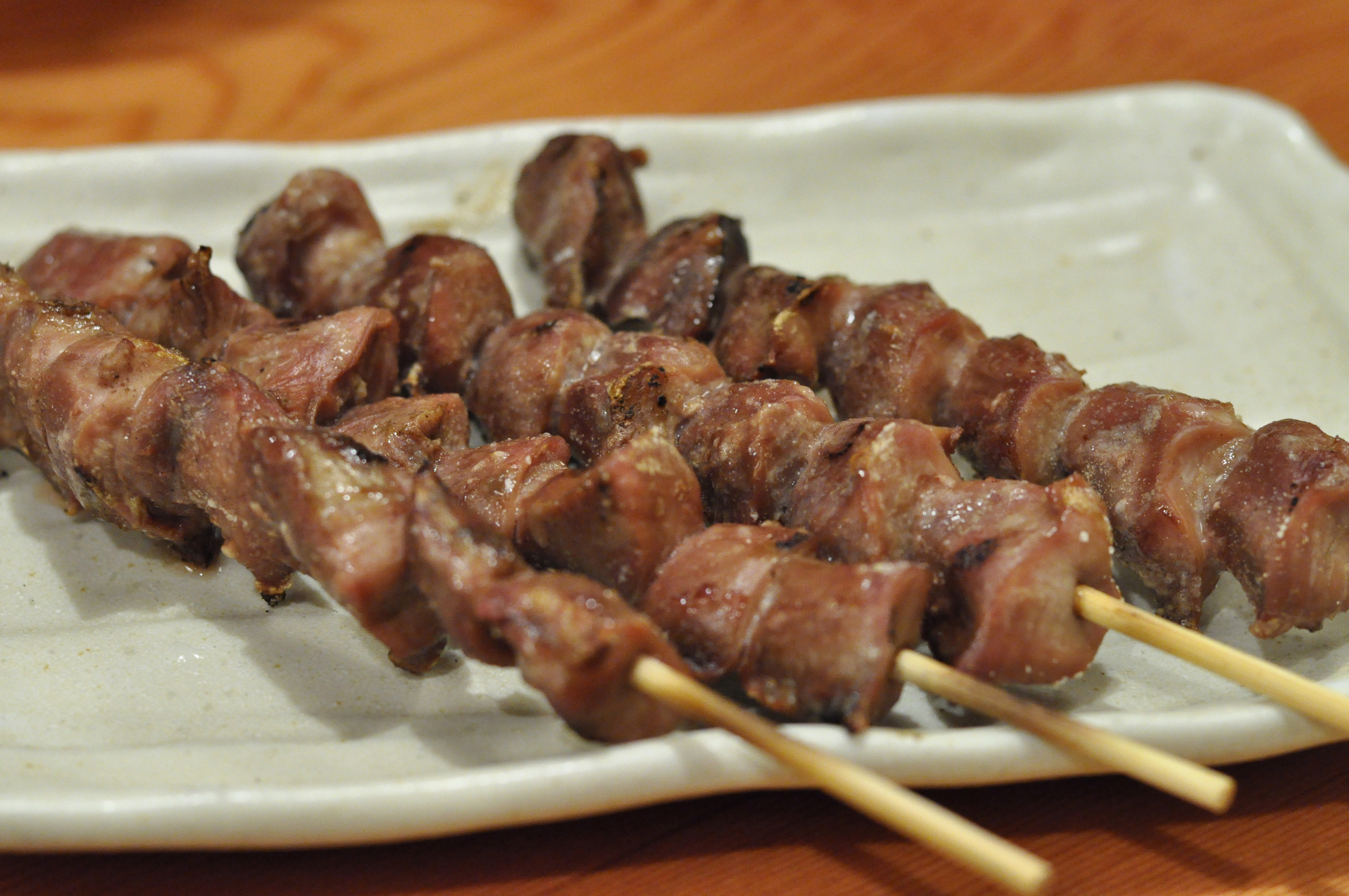
Sunagimo skewers consist of chicken gizzards, offering a crunchy texture with firm meat and a mild flavour.
10. Bonjiri
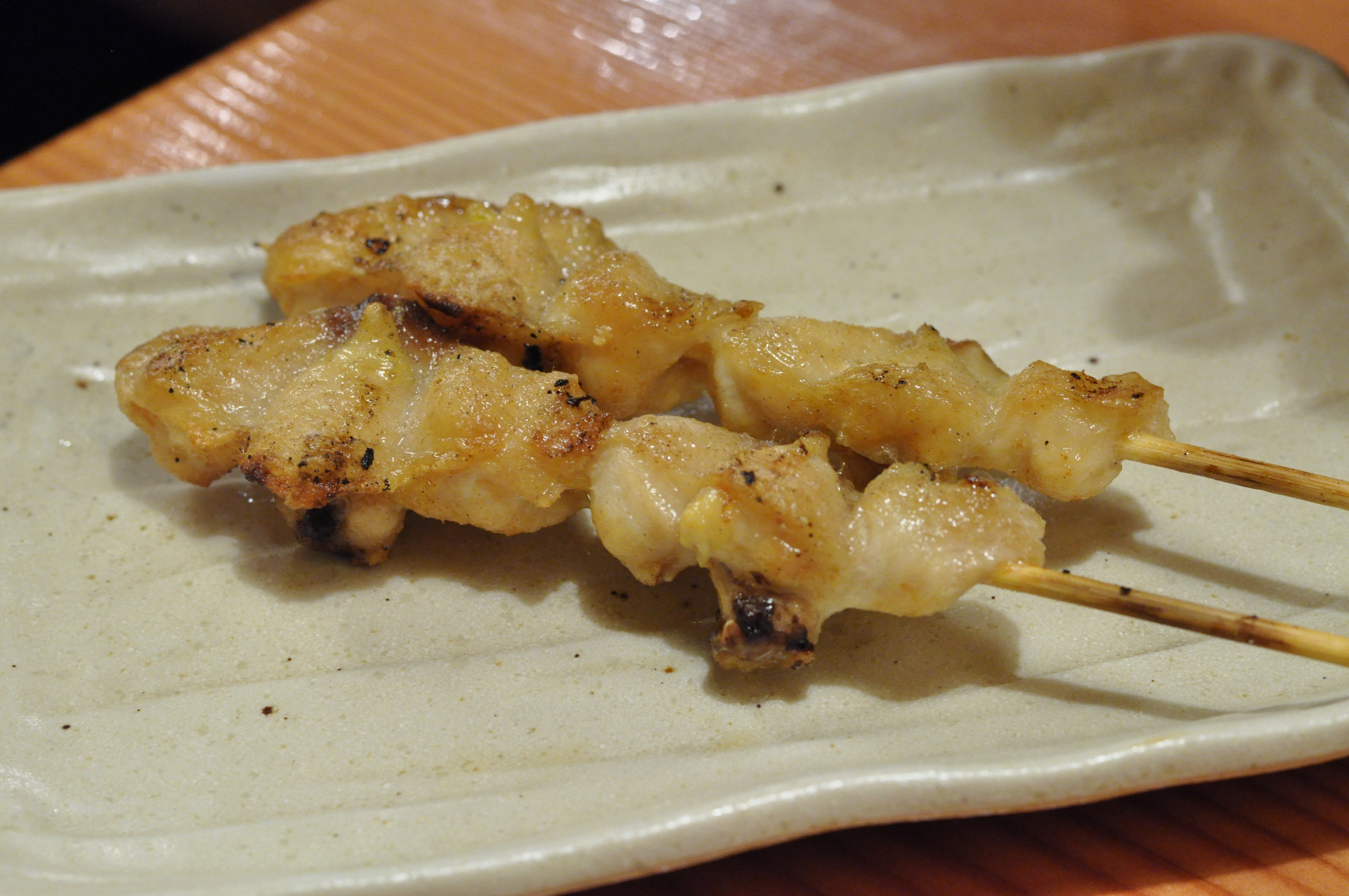
Pieces of meat from the chicken tail, often referred to as chicken ‘ass’, resemble the chicken thigh area but with firmer meat. Despite its rarity, it has gained popularity in recent years.
11. Kawa
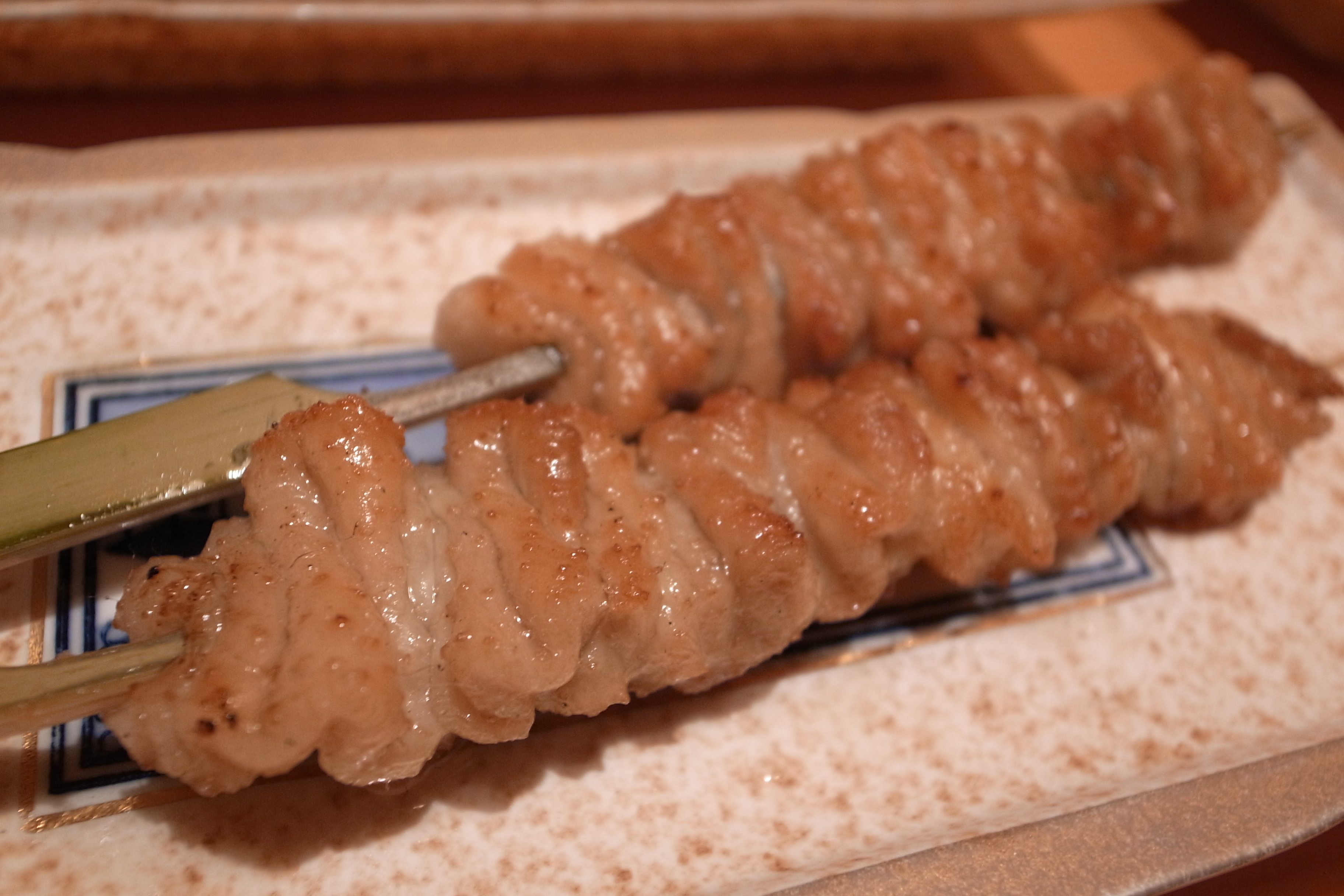
Pieces of chicken skin. It is usually cut into small pieces and is a little chewy. Since it’s been grilled lightly, it has a nice, slightly burned, flavour to it.
12. Nankotsu
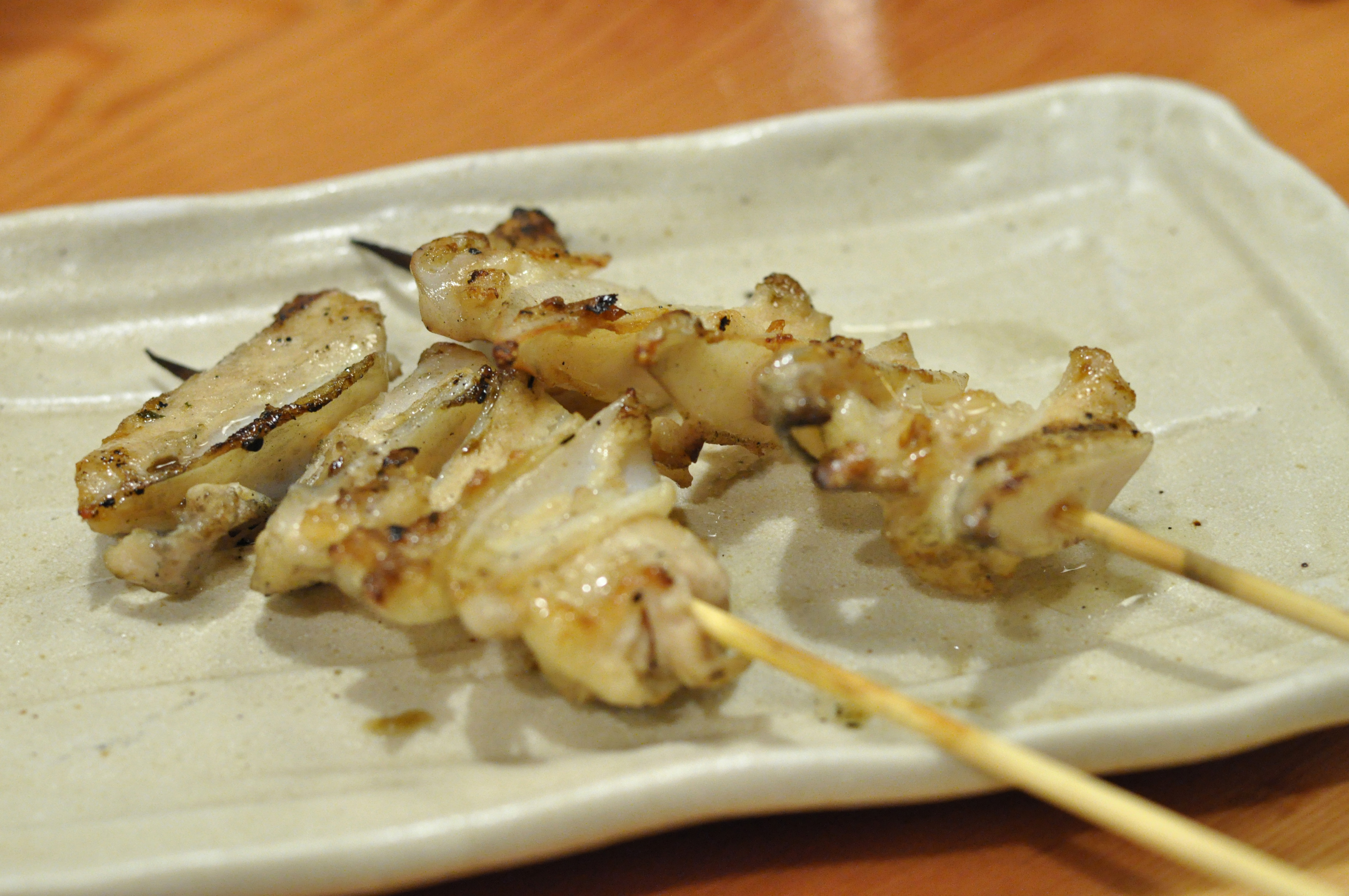
This is definitely an interesting one. Nankotsu consists of pieces of cartilage from the chicken breast skewered together. Cartilage might sound strange since you’re literally eating bones, but it’s actually quite soft and easy to chew.
Yakitori Condiments for a Perfect Smoky Treat
Besides the different yakitori types, the condiment paired with the yakitori plays a big part in the dish since it adds extra flavour. There are some fusion flavours available in select places, but there are two types of condiments that you can get with all the yakitori on this list.
Tare (Sauce)
Tare (pronounced “tah-re”) is a brown sauce, sweetened and thickened soy sauce. It is probably the most popular choice of sauce, especially for skewers with less flavorful meat.
Shio (Salt)
Shio means salt, and it is the simplest condiment. Salt is sprinkled onto the skewers, bringing out the fresh flavors of the meat without any additional seasoning
Embracing Unexpected Delights in the World of Yakitori
So, what’s your take on this diverse array of Japanese culinary delights? Now armed with knowledge about the various types of yakitori, your next visit to a yakitori restaurant or encounter with yakitori on the menu will be a breeze.
While some selections may seem unconventional and not your usual fare, don’t hesitate to give them a chance! Who knows, you might discover a new favorite that pleasantly surprises your taste buds!

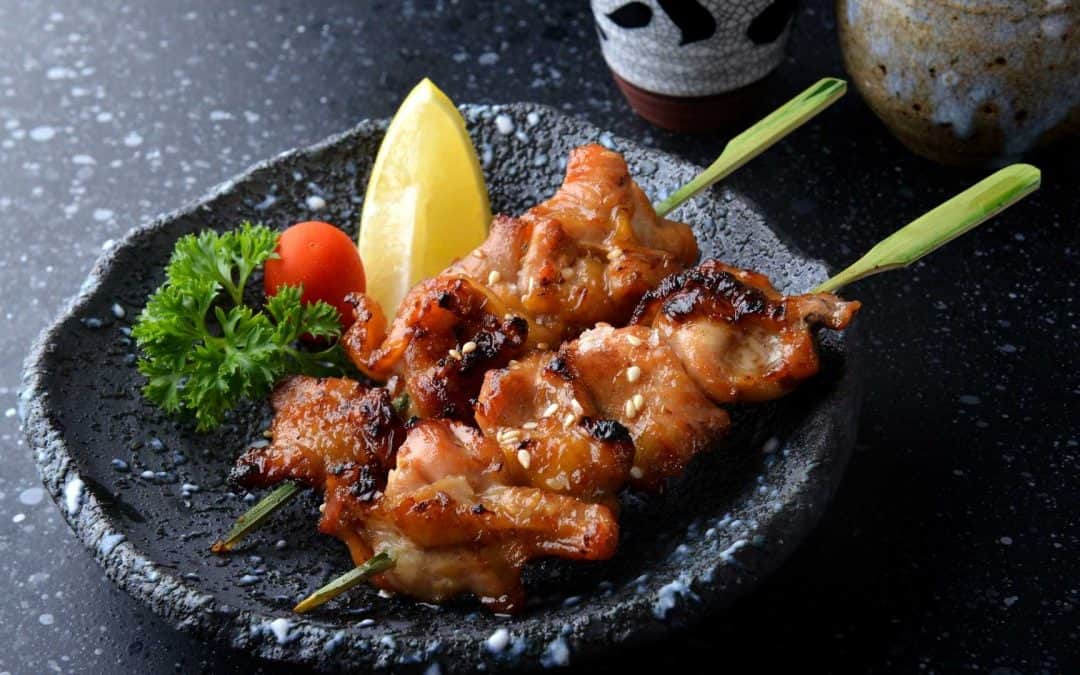
Trackbacks/Pingbacks